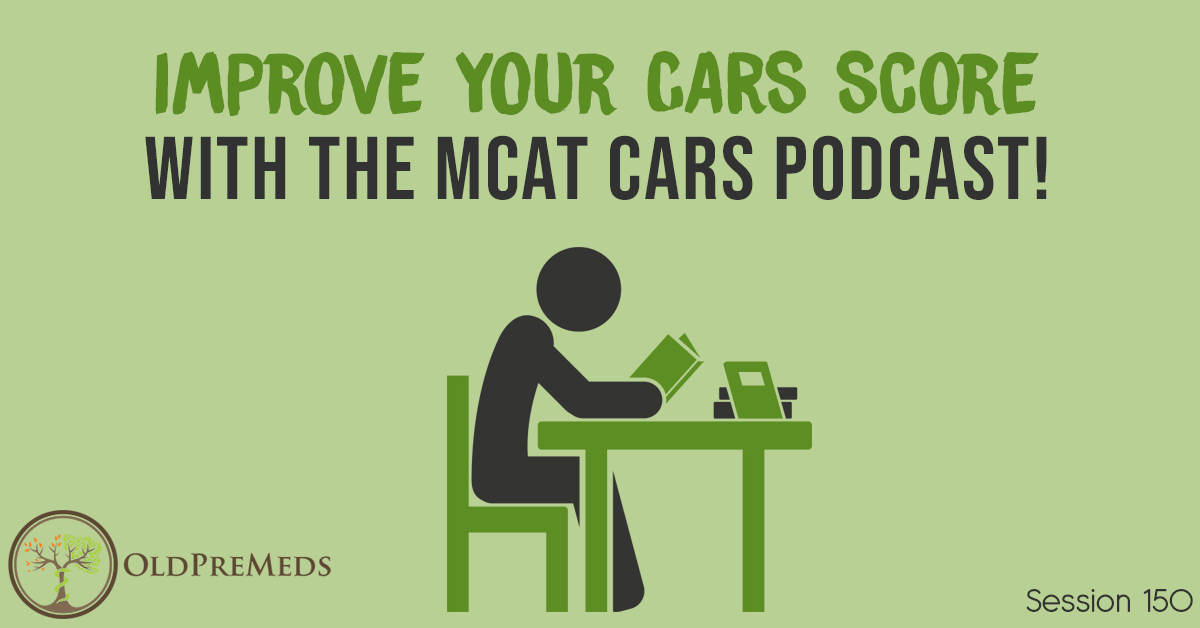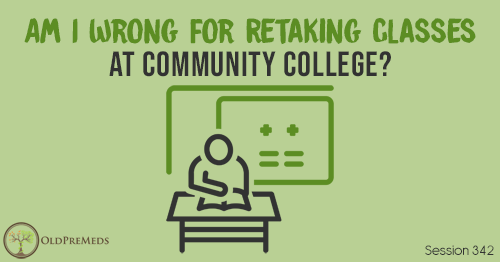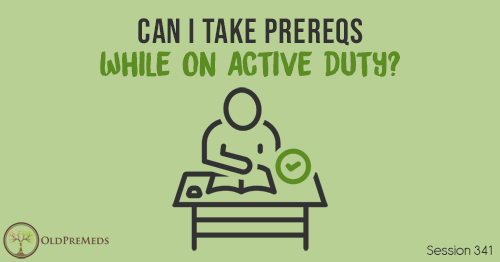Apple Podcasts | Google Podcasts

Session 150
Jack Westin was on the Premed Years Session 259 almost one year ago. we’ve launched the MCAT CARS Podcast and it’s going to change the way you prep for the MCAT.
Link to the full article: http://time.com/5405778/walking-after-eating-good-for-you
Text pulled from the article to read for the podcast:
At the end of a long day, it’s tempting to dive into your social feeds or Netflix queue the minute you’ve finished eating. But back before screens bogarted all our free time, an after-dinner stroll was a popular activity and one associated with improved health and digestion. “Italians have been walking after meals for centuries,” says Loretta DiPietro, a professor of exercise science at George Washington University’s Milken Institute School of Public Health, “so it must be good.”
Research backs this up. One small study co-authored by DiPietro found that when older adults at risk for type–2 diabetes walked on a treadmill for 15 minutes after a meal, they had smaller blood sugar spikes in the hours afterwards. In fact, the researchers found that these short post-meal walks were even more effective at lowering blood sugar after dinner than a single 45-minute walk taken at mid-morning or late in the afternoon.
The human digestive system converts food into the sugar glucose, which is one of the body’s primary energy sources—so after a meal, glucose floods a person’s bloodstream. Hormones like insulin help pull that glucose into cells, either to be used immediately or stored away for later use. But for people with diabetes and impaired insulin activity, too much glucose can remain in the blood, which can cause or contribute to heart disease, stroke, kidney disease and other health problems.
“Insulin secretion in response to a meal tends to wane later in the day, and this is especially so in older people,” DiPietro says. She points out that many of us eat our largest meal of the day in the evening, and we also tend to sit around afterward. As a result, “blood glucose levels will rise very high and will stay elevated for hours,” she says.
What good does walking do? “The muscles we use to walk use glucose as energy, drawing it out of circulation and therefore reducing how much is floating around,” says Andrew Reynolds, a postdoctoral research fellow at the University of Otago in New Zealand
Jack Westin was featured in Session 259 almost one year ago. Now we’ve launched the MCAT CARS Podcast and it’s going to change the way you prep for the MCAT. This is another podcast we’re doing on the MedEd Media Network.
Jack Westin is the expert CARS tutor online. He has a course all around teaching students how to prepare and maximize their CARS section score. When you do that, you typically improve in all of your other sections. The strategies that he teaches will help you with reading comprehension, which is what the MCAT CARS Podcast is all about – helping you comprehend what you’re reading.
So we’re going down to the basics because you need that solid foundation before you move forward with a lot of the test-taking skills that the MCAT also requires. It’s a lot of comprehensions, analysis, etc. And that’s what this podcast is all about.
[03:08] The MCAT CARS Podcast
Whether you’re an ESL (English as a Second Language) student, you lack confidence while reading, or are a slow reader, Jack Westin and The Medical School Headquarters are here to help you score higher in every section so that you can be confident you’re ready to get the MCAT score of your dreams!
So we’re taking snippets of articles and break them down for you, sentence by sentence, to really understand what is being talked about, what the author really means, to help you eventually score higher on the MCAT. We’re also going to make some episodes where we’re actually breaking down some MCAT-type questions as well. Lastly, please check out all our other podcasts on MedEd Media to help you along this journey to becoming a physician!
This week, we have an article from Time magazine.
The Case for Taking a Walk After You Eat
At the end of a long day, it’s tempting to dive into your social feeds or Netflix queue the minute you’ve finished eating. But back before screens bogarted all our free time, an after-dinner stroll was a popular activity and one associated with improved health and digestion. “Italians have been walking after meals for centuries,” says Loretta DiPietro, a professor of exercise science at George Washington University’s Milken Institute School of Public Health, “so it must be good.”
Research backs this up. One small study co-authored by DiPietro found that when older adults at risk for type–2 diabetes walked on a treadmill for 15 minutes after a meal, they had smaller blood sugar spikes in the hours afterwards. In fact, the researchers found that these short post-meal walks were even more effective at lowering blood sugar after dinner than a single 45-minute walk taken at mid-morning or late in the afternoon.
The human digestive system converts food into the sugar glucose, which is one of the body’s primary energy sources—so after a meal, glucose floods a person’s bloodstream. Hormones like insulin help pull that glucose into cells, either to be used immediately or stored away for later use. But for people with diabetes and impaired insulin activity, too much glucose can remain in the blood, which can cause or contribute to heart disease, stroke, kidney disease and other health problems.
“Insulin secretion in response to a meal tends to wane later in the day, and this is especially so in older people,” DiPietro says. She points out that many of us eat our largest meal of the day in the evening, and we also tend to sit around afterward. As a result, “blood glucose levels will rise very high and will stay elevated for hours,” she says.
What good does walking do? “The muscles we use to walk use glucose as energy, drawing it out of circulation and therefore reducing how much is floating around,” says Andrew Reynolds, a postdoctoral research fellow at the University of Otago in New Zealand.
[07:26] Paragraph 1, Sentence #1:
At the end of a long day, it’s tempting to dive into your social feeds or Netflix queue the minute you’ve finished eating.
Jack says:
We don’t know what the author is talking about just yet, but here, they’re kind of setting up a scene. If it’s tempting, it’s probably something you’re going to enjoy or people mostly enjoy and something that isn’t good for you all the time. So they’re probably associating something positive or a bit on the guilty side of social feeds or Netflix queue.
[08:41] Paragraph 1, Sentence #2:
But back before screens bogarted all our free time, an after-dinner stroll was a popular activity and one associated with improved health and digestion.
Jack says:
Here, it seems like the author is making a distinction between walking (after-dinner stroll) and big screens (Netflix, mobile phone, etc.), which seem to be not as healthy. They’re saying what’s better for your digestion is walking.
The word “bogarted” is probably something students don’t know what it means. Does it even matter if you know what that means? If you look at the context around the sentence, you can probably guess what it probably means. Now, most students who read this sentence tend to focus so much on that word that they lose picture of the surrounding words, of what it’s truly trying to convey.
Try to not let one word mess with you in that way. Instead, at the end of the passage or article, go ahead and underline those words and notecard them when you have time. Then test yourself on those kinds of words later down the road.
It’s not something that’s super important but if you have basic English under your belt and you’ve taken senior year high school English, you’re going to be an okay reader, strong enough to really read anything the MCAT throws at you.
[11:24] Paragraph 1, Sentence #3:
“Italians have been walking after meals for centuries,” says Loretta DiPietro, a professor of exercise science at George Washington University’s Milken Institute School of Public Health, “so it must be good.”
Jack says:
This is self-explanatory.
[12:00] What Paragraph #1 Means:
So the author here is probably saying that maybe we should be walking after we eat, or at least, walking seems to be improving our health or better for our digestion after we eat.
Even the first sentence said, “the minute you finished eating.” So everything we talk about is after eating. It has nothing to do with just walking in general, but after-eating activities.
This then seems to be the topic or theme.
[12:42] Paragraph 2, Sentence #1-2:
Research backs this up. One small study co-authored by DiPietro found that when older adults at risk for type–2 diabetes walked on a treadmill for 15 minutes after a meal, they had smaller blood sugar spikes in the hours afterwards.
Jack says:
So far, what we know is that walking after dinner will improve your health. So the author tries to support this idea. You may not know anything about blood sugar spikes. It may be good for you or bad. You may not even know what Type II diabetes is. But the fact they’re bringing this up as evidence for why it’s good for you, the fact you know they’re setting this up as a reason it’s good for you, tells you that maybe “lower blood sugar spikes” is the better help.
This has nothing to do with your background knowledge of diabetes. You just have to be aware of how things are going on and how this may be fitting into this conversation.
[15:47] Paragraph 2, Sentence #3:
In fact, the researchers found that these short post-meal walks were even more effective at lowering blood sugar after dinner than a single 45-minute walk taken at mid-morning or late in the afternoon.
Jack says:
So here, the author says short walks after dinner are better than longer walks mid-morning or late in the afternoon. And that there’s data that support this, so you should be walking post-meal to reduce blood sugar spikes.
[17:03] What Paragraph #2 Means:
So far, we’ve had two paragraphs that go in one direction – walking after dinner.
[17:32] Paragraph 3, Sentence #1:
The human digestive system converts food into the sugar glucose, which is one of the body’s primary energy sources—so after a meal, glucose floods a person’s bloodstream.
Jack says:
Again, you don’t need to know how this works exactly. They’re teaching it to you. They’re literally teaching you as you explain it. That’s the beauty of CARS is that you can read something and learn something every time you read.
Also, they now call the sugar, glucose. But they’re not just saying sugar. They’re calling it glucose. So be careful. They may just use that word glucose on its own. But you don’t have to necessarily know sugar anymore, but you now have to use the word glucose. So just remember that glucose is synonymous with sugar.
[19:10] Paragraph 3, Sentence #2:
Hormones like insulin help pull that glucose into cells, either to be used immediately or stored away for later use.
Jack says:
If you notice, they’re not using the word sugar anymore. And this could throw a lot of students off. So as long as you read the sentence before this carefully, then you should be fine with this sentence. Now, you know that insulin tries to take insulin and put it into cells.
Moreover, Jack warns that highlighting stuff on the MCAT can be a huge distraction. It’s okay to do this with dates and names, as those could be things that show up. But if you become a habitual highlighter, you’re no longer reading, but just zoning off and trying to highlight things. That said, there are many students comfortable with highlighting and do it properly. They do it well enough to do really well on this test. But over time, this could become a bad habit. Instead, just be more attentive. If you keep reading in this way and analyzing what you’ve read, you’re going to start picking up on those details that you might not have otherwise picked up on. And this only comes through review and experience and practice.
Just remember that reading this way and understanding what you’re reading is not enough. You also have to understand how it relates to the bigger picture, how the author feels about it, etc.
[21:52] Paragraph 3, Sentence #3:
But for people with diabetes and impaired insulin activity, too much glucose can remain in the blood, which can cause or contribute to heart disease, stroke, kidney disease and other health problems.
Jack says:
Again, they’re educating us. They’re literally telling us that if you have diabetes, you have this impaired insulin activity. That means that there’s too much glucose in the bloodstream and that causes problems.
[23:03] What Paragraph #3 Means:
We don’t know how this really relates to the other two paragraphs just yet. It seems the author is interjecting with some kind of mechanism. And maybe this will play a role in the bigger picture.
[23:42] Paragraph 4, Sentence #1:
“Insulin secretion in response to a meal tends to wane later in the day, and this is especially so in older people,” DiPietro says.
Jack says:
The key here is with respect to the prior paragraph, brace yourself. When you’re going into a new paragraph, you’re probably going to touch on what you just read. And what you just read right before this sentence was there were problems with insulin.
So when thinking of what wane refers to here, based on everything we talked about, you can assume it’s something that’s bad or a problem because it lowers or weakens. So it seems insulin secretion is not working as well later in the day, especially in older people.
[25:51] Paragraph 4, Sentence #2:
She points out that many of us eat our largest meal of the day in the evening, and we also tend to sit around afterward.
Jack says:
The insulin is not working at a time we’re eating the most. It means we have a lot of sugar in our bloodstream right afterward.
[26:36] Paragraph 4, Sentence #3:
As a result, “blood glucose levels will rise very high and will stay elevated for hours,” she says.
Jack says:
The big picture here is that a large meal at the end of the day, just sitting afterward, what happens is our blood glucose levels go high and remain high. And as Paragraph #2 says, this can contribute to health problems so it’s a bad thing.
[27:12] What Paragraph #4 Means:
The big picture here is that insulin doesn’t work well at the end of the day and then we compound that with eating the largest meal of the day and sitting around afterward.
[27:27] Paragraph 5, Sentence #1:
What good does walking do?
Jack says:
So the author is trying to cycle back to the beginning of the article. The author is trying to bring back the walking, after the education given to us.
[27:47] Paragraph 5, Sentence #2:
“The muscles we use to walk use glucose as energy, drawing it out of circulation and therefore reducing how much is floating around,” says Andrew Reynolds, a postdoctoral research fellow at the University of Otago in New Zealand.”
Jack says:
Basically, you have to know that active muscles help with reducing blood sugar levels. That’s what they’re trying to convey here. Take note here, that the author didn’t mention muscles of the legs, but just muscles in general. It’s good to have a picture in your mind of what kind of muscles but the MCAT could confuse you. They could ask you a question about a different muscle that might not be associated with the legs. And this could distract you if you’re too focused on the legs.
So just have a broader sense of what they’re trying to say. Always keep an open mind. This is very important.
[30:07] Final Thoughts
This may seem easy to read but it could still be difficult if you’re not careful and not attentive. Just because the words seem easy does not mean it’s easy. You have to be careful with what you’re reading.
Just because you know a thing or two about diabetes doesn’t mean that you’re going to know exactly what they’re talking about. So don’t bring an outside knowledge and be careful with what you’re reading even if it’s an easy read.
Finally, for those who don’t know much about the topic, you don’t need to. Just go in and embrace what you’re learning. Embrace the reading aspect. A lot of students aren’t willing to embrace what they’re reading because they’re under pressure. They don’t want to sit there and read so they start skimming what they’re reading. Instead, just enjoy what you’re reading. Take it in and you might learn something new!
[31:15] Check Out Jack Westin
If you are new into the MCAT prep world, sign up for the Jack Westin Daily CARS MCAT Question of the Day. You get a free question delivered to your inbox everyday. It simulates the actual MCAT test environment and you’re getting prep for free everyday.
Text MCATCARS to 44222 and get a link to how to sign up for the MCAT Question of the Day from Jack Westin.
Links:
PMY Session 259: How Can I Improve My CARS Section Score on the MCAT?











